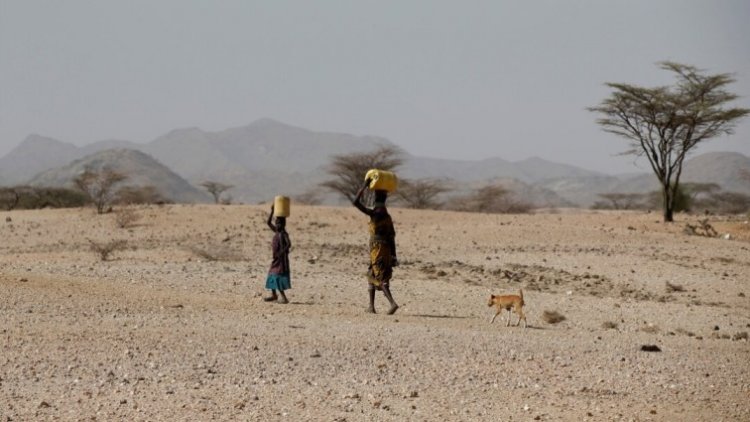Drought forecast for the fifth consecutive year in large areas of Africa, WMO issued a stern warning
Millions of people in Africa's Greater Horn have already suffered the longest drought in 40 years, and parts of the region are facing less rain for the fifth time in a row.

Millions of people in Africa's Greater Horn have already suffered the longest drought in 40 years, and parts of the region are facing less rain for the fifth time in a row. This has been confirmed by the World Meteorological Organization (WMO). The Greater Horn of Africa refers to the Somali Peninsula of Africa.
The forecast for October-December, released in the Greater Horn of Africa Seasonal Climate Outlook Forum, shows the potential for much drier than average conditions across much of the region, adding to the crisis for millions of people.
The Intergovernmental Authority on Development (IGAD) Climate Prediction and Application Center (ICPAC) - Director of WMO's Climate Center for East Africa Guled Ayrton said, "This bad news pains me.
"Unfortunately, according to our model, we are entering our fifth consecutive unsuccessful rainy season in Horn, Africa," he said.
Last month, IGAD and humanitarian agencies warned that more than 50 million people in the region suffered from severe food insecurity this year.
In Ethiopia, Kenya and Somalia we are on the verge of an unprecedented humanitarian catastrophe. Very little rainfall is expected by the end of the year.
The gravity of the situation was echoed by IGAD Executive Secretary Workneh Gebehu. He called on national governments, donors, humanitarian and development actors to help us weather the worst of this crisis.
The rainfall from October to December contributes up to 70 percent of the annual total in the equatorial parts of the Greater Horn of Africa, especially in eastern Kenya.
However, the onset of the rainy season is likely to be delayed over most of the eastern parts of the region, leading to deficient rainfall. The exceptional drought underscores the region's vulnerability to climate-related risks, which are expected to intensify due to climate change.
Hydrometeorological and early warning services (EWS) can potentially reduce negative impacts, WMO announced the launch of a new $5.2 million project to better enable regional and national entities to produce and use these services. disclosed.
Project activities will center around supporting EWS regional services and strengthening regional coordination and cooperation for these and climate services.
According to the WMO, the support of regional centers to provide Hydromet products and services will contribute to strengthening the capabilities of the national meteorological and hydrological services.
In addition, the project will also provide technical assistance to Ethiopia, Somalia and Sudan by building and leveraging on-going pipeline investment projects implemented or financed by WMO, the United Nations Office for Disaster Risk Reduction and the World Bank. In Ethiopia, the activities will help provide electricity to poor families in rural areas.







